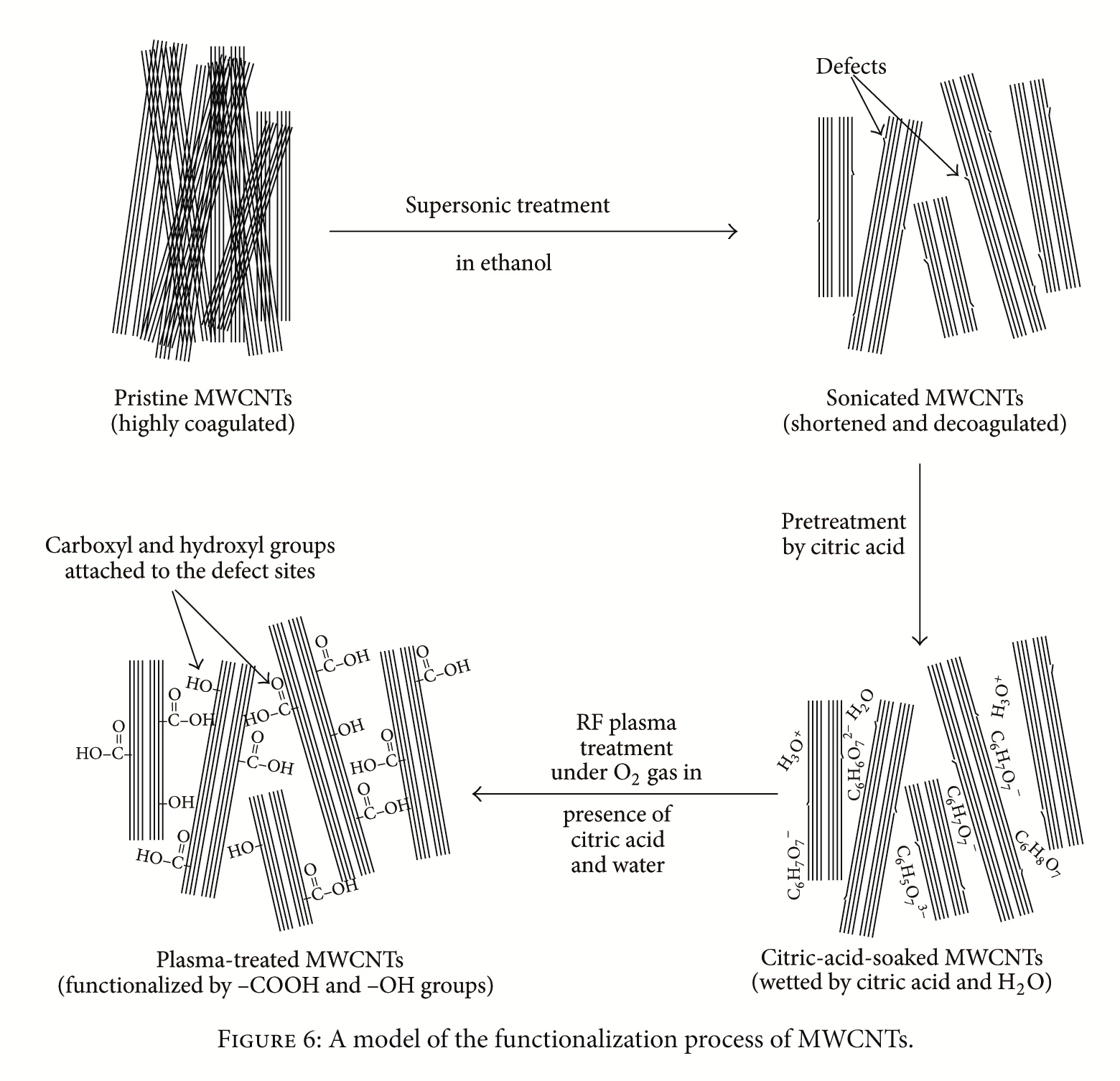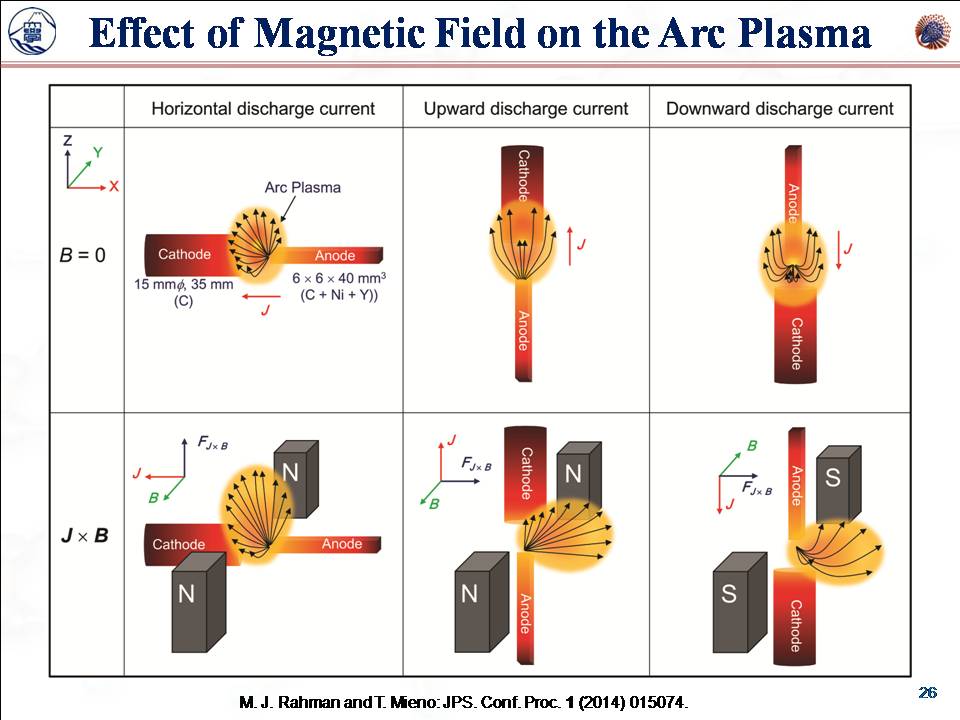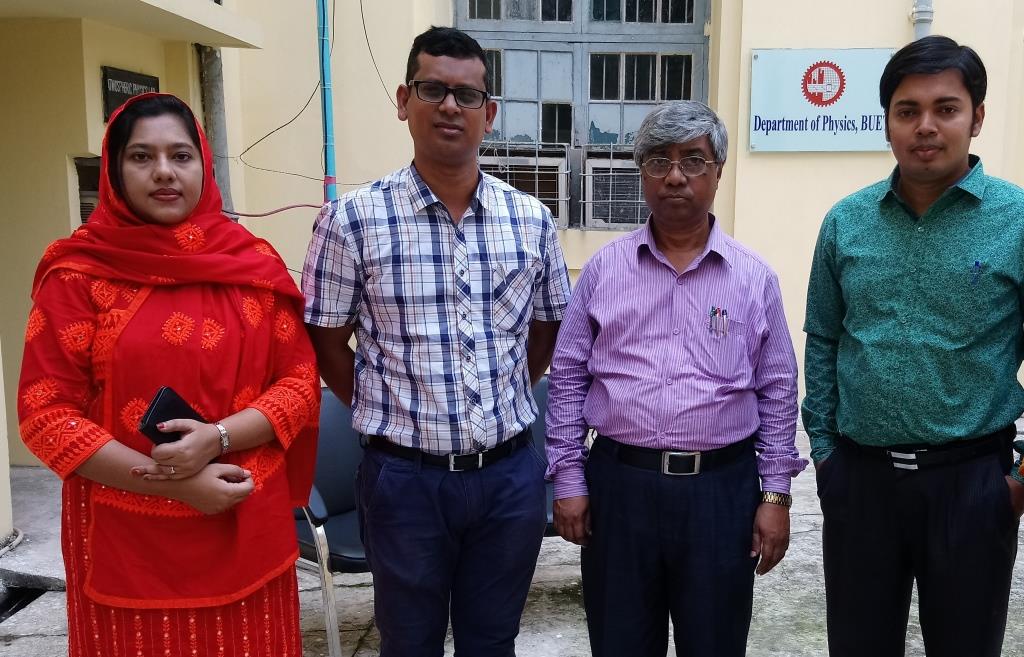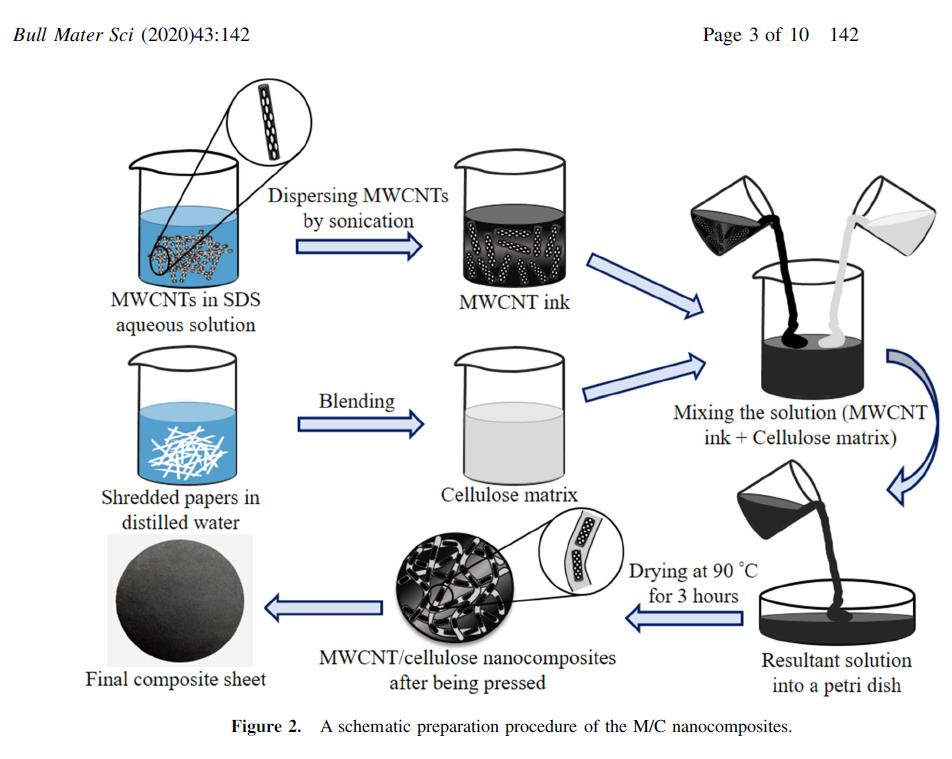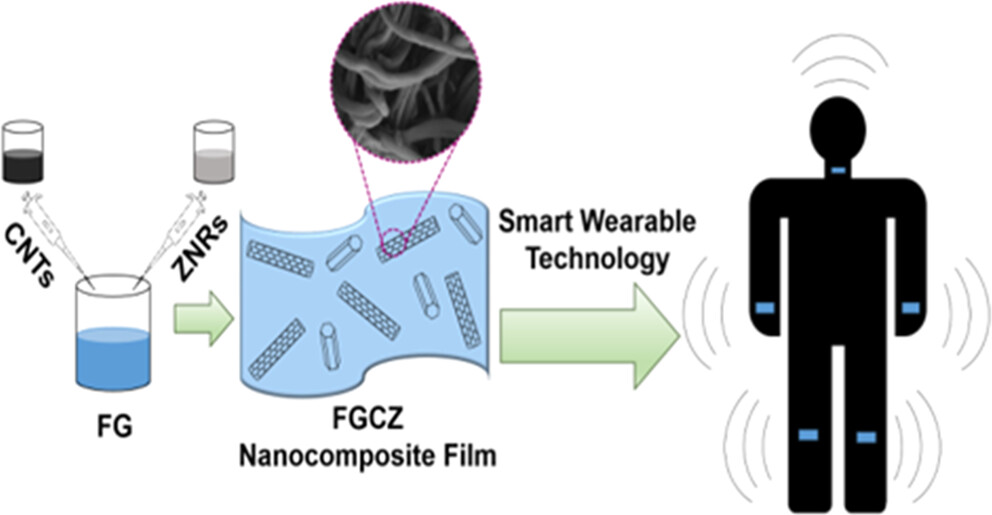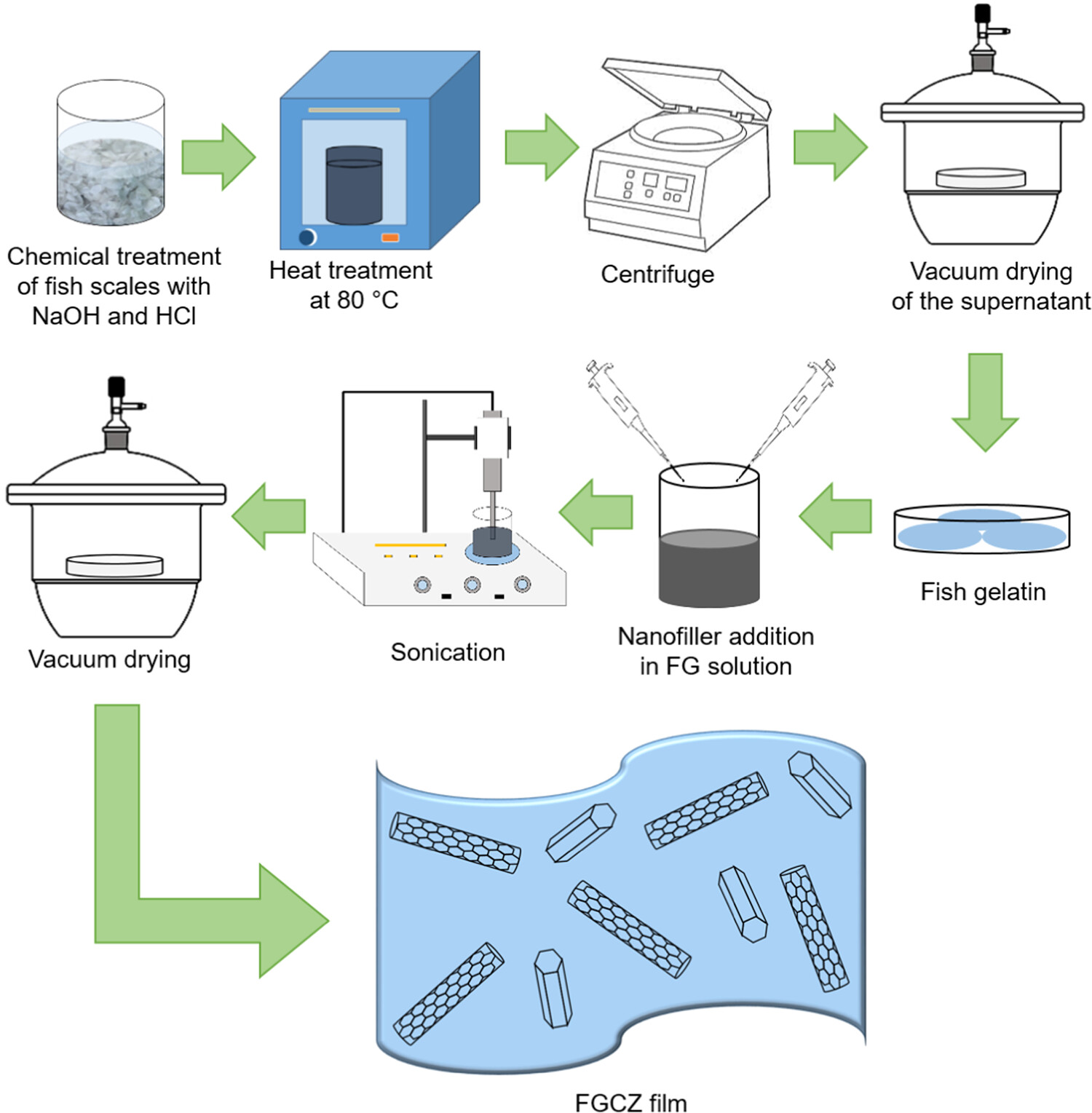

Bio
Dr. Mohammad Jellur Rahman has been working in this department since 27 June, 2007 and actively serving as an Professor of Physics since 1 March, 2021. He has excellent academic background. He has established a Polymer Nanocomposites Laboratory for the postgraduate research of this Department. He has supervised 08 students to get their M.Sc. and M.Phil. degrees from this department and at present there are 03 Ph.D. students, 01 M.Phil. students and 03 M.Sc. students working under his supervision. He has shown outstanding performance in research work and so far he has contributed more than 31 papers in national and international referred journals with more than 429 citations. He has presented a number of conference papers and contributed to a book titled as ‘Carbon Nanotubes - Current Progress of their Polymer Composites’ for the Postgraduate Level and 02 books for the intermediate level (Physics Part I and II, Text Books for Higher Secondary Education).
Dr. Rahman is born in Tangail, Bangladesh in January, 1979. He obtained his B.Sc. (Honours) in 2001 (Held in 2004) and M. S. in 2002 (Held in 2006) in Physics from the University of Dhaka, Bangladesh. He joined the Bangladesh Bank (Central Bank of Bangladesh) as an Assistant Director in December, 2006. Later he joined the Department of Physics, Bangladesh University of Engineering and Technology (BUET), Dhaka in June, 2007 as a Lecturer. He completed his M.Phil. from BUET in 2011 and went to Japan in October 2011 for Ph.D. getting the MEXT (Monobukagakusho) scholarship. He got his Ph.D. on the Production, functionalization and applications of carbon nanotubes from Shizuoka University, Japan in September 2014. He became Assistant Professor in February, 2015, Associate Professor in March, 2018 and Professor in March, 2021. His present research interests are on Plasma Processing of Polymers and Carbon Nanomaterials. He is working on production of nanoparticles & nanocomposites, plasma polymerized thin films, and barium titanate based ceramics.
Education & Training
-
Ph.D. 2014
Optoelectronics and Nanostructure Science
GSST, Shizuoka University, Japan
-
M.Phil. 2011
Physics
Bangladesh University of Engineering & Technolog, Bangladesh
-
M.S. 2002
Physics
University of Dhaka, Bangladesh
-
B.Sc. Honours 2001
Physics
University of Dhaka, Bangladesh
Honors, Awards and Grants
-
2011-2014MEXT (Monobukagakusho) Scholarship

Got Ph.D. from Shizuoka University, Japan in 2014 getting the MEXT (Monobukagakusho) scholarship from Japanese Government for the period October 2011 to September 2014.
Publications
Filter by type:
Sort by year:
Graphene Oxide Reinforced Low-Density Polyethylene Nanocomposites with Improved Mechanical and Electrical Properties
Journal Paper J. Mater. Eng. Perform. (Online)
Abstract
In this study, high-strength, lightweight, and electrically conductive nanocomposites are synthesized by incorporating reduced graphene oxide (rGO) into low-density polyethylene (LDPE) through extrusion moulding. The surface morphology analysis reveals that the rGO/LDPE nanocomposites have rougher, layered structures for higher rGO concentrations due to coagulation. Structural modifications and significant absorption peaks corresponding to the bending and stretching vibrations of specific functional groups are detected. Enhanced crystallinity with the addition of rGO is observed where 3% rGO/LDPE has shown the highest crystallinity of 44%. Enhancement in thermal stability is evident by higher degradation temperatures and less weight loss, delaying degradation by 34 K for 2% rGO/LDPE nanocomposite. 70% enhancement in Young’s modulus is achieved in this case. Moreover, the DC electrical properties of the nanocomposites have exhibited a significant increase in current density (J) with higher rGO concentrations, indicating the formation of a continuous conductive pathway. Validation of the experimental results through percolation theory indicates that the nanocomposite is a disordered 2D–3D hybrid conductive network. As the temperature is increased, an increase in J is observed owing to the improvement of the mobility of charge carriers. However, excessive rGO concentration (for 3% rGO/LDPE) has reduced the J due to agglomeration of rGO. These findings suggest the potential use of these nanocomposites in electronics applications.
Co-Zn ferrite incorporated biochar for Cr (VI) removal from wastewater: Adsorption mechanism and process optimization with response surface methodology
Journal Paper Environ. Monit. Assess. 197, 623 (2025).
Abstract
Chromium contamination from tannery effluents significantly threatens environmental sustainability and public health. This study aims to develop a Co-Zn ferrite-incorporated water hyacinth biochar (Co-ZnF@WHB) for efficient Cr (VI) removal from contaminated water. The biochar was synthesized through pyrolysis of water hyacinth steam at 450 ⁰C, followed by HNO₃ activation to enhance surface functionality. FTIR and XPS analysis confirmed the introduction of C = O and − OH groups, which created active sites and significantly improved Cr (VI) adsorption. XPS analysis indicated Cr (VI) reduction to Cr (III) via oxidation of − C = O to COO⁻ groups. The incorporation of Co-Zn ferrite introduced magnetic properties, facilitating easy separation. Adsorption experiments revealed a strong pH dependence, with maximum capacities of 52.15 mg/g at pH 2.0 (298 K) in synthetic solutions and 66.38 mg/g at pH 3.54 for tannery effluent. Kinetic modeling suggested chemisorption as the rate-limiting step, while isotherm analysis confirmed monolayer adsorption. Thermodynamic studies indicated an endothermic (ΔH⁰ ≈ 34 kJ/mol) and spontaneous (ΔG⁰ < 0) adsorption process. The response surface methodology (Box-Behnken Design) optimized preparation conditions, ranking factor influence as pH > Cr (VI) concentration > contact time. The primary Cr (VI) removal mechanisms involved surface complexation, electrostatic interactions, and reduction. This study demonstrates the potential of Co-ZnF@WHB as an effective, sustainable, and eco-friendly material for Cr (VI) remediation from polluted water sources.
CNT and ZnO Nanorod Incorporated Fish Gelatin Nanocomposite towards Developing Flexible Pressure/Strain Sensorsf for Human Motion Monitoring
Journal Paper J. Mater. Chem. A, 2025, Advance Article
Abstract
A comprehensive analysis of a novel nanocomposite, namely, FGCZ nanocomposite that is composed of fish gelatin (FG), carbon nanotubes (CNTs), and zinc oxide nanorods (ZNRs), was carried out for its potential use in pressure/strain sensing applications. High-resolution transmission electron microscopy confirmed a well-graphitized multi-walled structure with minimal defects in the CNTs while highlighting the polycrystalline nature of the ZNRs. The nanofillers were uniformly dispersed within the polymer matrix, resulting in enhanced Young's modulus and ultimate tensile strength by 350% and 250%, respectively, driven by the strong interfacial interactions between the CNTs, ZNRs, and FG. Electrical conductivity increased (up to ∼11 000 times) with increasing nanofiller concentrations owing to the formation of conductive networks, although agglomeration at higher concentrations (0.30 wt%) impeded the performance. The FGCZ nanocomposite containing 0.25 wt% nanofillers demonstrated excellent electrical properties, making it an ideal candidate for further exploration of its pressure/strain sensing capabilities. The FGCZ nanocomposite exhibited sensing abilities, which can be attributed to the formation of efficient conductive pathways under mechanical deformation. Moreover, the nanocomposite demonstrated rapid biodegradability, fully degrading in water within 30 min, highlighting its potential as an environmentally sustainable material.
Bio-degradable Smart Nanocomposite Fiber from Moringa Oleifera Fiber Reinforced with Safely Functionalized Carbon Nanotubes
Journal Paper AIP Advances 15, 015001 (2025)
Abstract
In this work, we present an innovative approach to fabricating biodegradable smart nanocomposite fibers by incorporating functionalized carbon nanotubes (f-CNTs) onto the surface of Moringa oleifera fibers (MOFs) by using a simple dipping–drying technique. The objective of this research is to enhance the thermal, mechanical, and electrical properties of MOFs through a scalable, non-destructive modification process, making them suitable for advanced applications. A facile radio frequency oxygen plasma processing method is employed to modify CNTs with hydrophilic oxygen-containing groups. The fibers are treated with an alkaline solution coupled with plasma treatment to enhance the interaction between the fiber and the matrices. The performance of the fiber is evaluated by measuring the surface morphology, structural, thermal, mechanical, and electrical properties of the uncoated and f-CNTs-coated fibers. Field emission scanning electron microscope micrographs show that CNTs are uniformly integrated onto the surfaces of the treated MOFs. The results also indicate that interaction between the treated MOFs and f-CNTs, thermal stability, flame retardancy, crystallinity, and mechanical strength of the fibers are increased remarkably with the incorporation of f-CNTs. The resistance per meter of the f-CNTs/treated MOFs fiber drops dramatically from 1.5 MΩ to 13 Ω with the addition of f-CNTs. The current density of the sample increases by about 1000 times, and conductivity rises to 80 S m−1under the applied voltage of 50 V, which also increases with temperature, indicating the semiconducting nature of CNTs. Therefore, these fibers are suitable for use in various electrical and electronic devices as well as conductive fillers in composite technologies.
Self-Powered Wearable Pressure Sensors for Detection and Separation of Signals for Various Human Movement
Journal Paper Analysis and Sensing, 2024, Article ID: e202400062
Abstract
A detailed study on the dynamic response of mountable pressure sensors is presented, with a focus on foot pressure sensors integrated with carbon nanotube (CNT)-coated cotton fibers. The research explores the sensor‘s sensitivity to pressure changes, repeatability, hysteresis, and durability through rigorous modeling and experimental validation. Computational simulations using Python (NumPy library) and experimental data demonstrate the sensor‘s nonlinear conductance response to applied force, attributed to the varying contact area and number of contact points among the fibers. Long-term outdoor exposure tests confirm the material‘s resilience to environmental stressors, maintaining its electrical conductivity and structural integrity. The study also investigates the sensor‘s capability to monitor human activities, such as walking, running, stair climbing, and jumping, by analyzing force profiles and step rates. Additionally, the sensors effectively detect muscle movements during swallowing, coughing, and speech, with potential applications in health monitoring and artificial voice synthesis. The Minimum Redundancy Maximum Relevance (MRMR) algorithm is utilized to implement feature selection methods aimed at distinguishing between various activities, thereby demonstrating the sensor‘s potential for activity recognition. An estimation of harvested electric power using a piezoelectric sensor on the pressure sensors has been done, which can provide power to the different wearable devices attached to our body. This work contributes to the advancement of self-powered wearable pressure sensors to monitor real-time human activity, with implications for healthcare, sports performance, and assistive technologies.
Adsorptive Removal of Toxic Heavy Metals from Wastewater Using Water Hyacinth and Its Biochar: A Review
Journal Paper Heliyon, Vol. 10(17), Article ID: e36869, 2024
Abstract
Heavy metal contamination in aquatic ecosystems worsens due to rapid industrial expansion. Biochar, an efficient and economical adsorbent, has attracted much interest in environmental science, particularly in removing heavy metals (HMs). The paper covers basic details on biochar, its preparation, and potential chemical and inorganic modifications. Possible adsorption mechanisms of HMs on biochar, which include electrostatic attraction, ion exchange, surface complexation, chemical precipitation, and hydrogen bonding, are also discussed. These mechanisms are affected by the type of biochar used and the species of HMs present. Research findings suggest that while biochar effectively removes HMs, modifications to the carbon-rich hybrid can enhance surface properties such as surface area, pore size, functional groups, etc., and magnetic properties in a few cases, making them more efficient in HM removal. The choice of feedstock materials is one of the key parameters influencing the sorption capacity of biochars. This review aims to investigate the use of various forms of water hyacinth (WH), including aquatic plants, biomass, biochar, and modified biochar, as effective adsorbents for removing HMs from aqueous solutions and industrial effluents through a comparative analysis of their adsorption processes. However, further studies on the diverse effects of functional groups of modified biochar on HMs adsorption are necessary for future research.
Effect of RF and AC powers on morphological, structurala, and optical properties of plasma polymerized EDOT thin films
Abstract
This study focused on the effects of alternating current (AC) and radio frequency (RF) power in the formation of plasma polymerized 3,4-ethylenedioxythiophene (PPEDOT) thin films onto glass substrates. Field emission scanning electron microscopy revealed that thin films produced both in AC and RF conditions exhibited a pristine surface morphology without any pinholes. Fourier transform infrared spectroscopy indicated that the chemical compositions of the PPEDOT films differed from that of the 3,4-ethylenedioxythiophene (EDOT) monomer due to structural rearrangements. The energy band gap values determined from the UV–Vis spectra were approximately 3.68 eV for the samples produced under AC power, while those for the samples produced under RF power were relatively higher, around 3.84 eV. Furthermore, the thin films synthesized using RF power and AC power exhibited significant differences in optical properties, including Urbach energy, extinction coefficient, steepness parameter, refractive index, optical conductivity, and skin depth. The EDOT monomer, PPEDOT and computed PEDOT via Density Functional Theory have been explicitly modeled with the intend to scrutinize the interplay between polymer formation and the modulation of molecular orbital energy levels, calculating band gaps, and molecular vibrations.
A Comprehensive Study on Structural and Optical Properties of Zinc Selenide/Poly Ortho-methoxyaniline Hybrid Thin Films Deposited by Chemical Bath Deposition and Plasma Polymerization Techniques
Abstract
Hybrid thin films hold dominant importance in various technological applications due to their synergistic effects between inorganic and organic materials. In this study, inorganic–organic hybrid thin film has been produced where the inorganic layer of zinc selenide (ZnSe) is deposited first through chemical bath deposition technique and the organic layer is deposited onto the inorganic layer using a capacitively coupled plasma polymerization technique. The ZnSe layer deposited for one hour has been used as the base layer and plasma polymerized (PP) o-methoxyaniline (OMA) has been deposited for different deposition durations. The experimental results showed that thickness of the the hybrid films increases with the organic layer deposition time. The field emission scanning electron microscope exhibited a large number of pores on the surface of the ZnSe film, which are significantly covered up when organic PPOMA is deposited onto it. The energy-dispersive X-ray confirms the constitutional elements of the hybrid films and X-ray diffraction study indicates the enhancement of crystallinity of the film. Differential scanning calorimetry and thermogravimetric analysis specify that hybrid films are thermally more stable (up to 396 °C) compared to pure ZnSe film (351 °C), probably due to higher conjugation in the PP organic layer. The direct optical band gaps of the deposited hybrid thin films are found to increase from 2.4 to 2.80 eV with the increase of organic layer onto ZnSe film. Consequently, the Urbach energy decreases from 0.94 to 0.66 eV with the deposition of hybrid film for different time durations. The outcomes of this study suggest that the hybrid films would have enormous potential as passive thin films for photovoltaic cells, sensing and optical devices.
Fish Gelatin Reinforced with Carbon Nanotubes and ZnO Nanorods for Wearable Smart Technologies
Journal Paper ACS Appl. Nano Mater, 7 (5), 2024, 5202-5213
Abstract
This study presents a comprehensive analysis of a ternary nanocomposite of carbon nanotube (CNT) and ZnO-nanorod (ZNR)-reinforced fish gelatin (FG), assessing its potential applications for wearable smart technology. The nanocomposite is prepared by the solution casting method by varying concentrations of nanofillers (0.00, 0.20, 0.25, and 0.30%), where individual nanofillers are taken in the same concentration and analyzed by different characterization techniques to comprehend their interaction. Regarding nanofillers, nearly perfect graphitized CNTs of minimum defects and ZNRs with a high degree of crystallinity with an interlayer spacing of 0.233 nm are used and encapsulation of the nanofillers by the FG matrix is observed. The crystallinity is increased with the initial incorporation of nanofillers but interestingly decreases with higher concentrations. Amide bands are identified with peak shifting, suggesting enhanced interactions between nanofillers and the FG matrix. With the increase in nanofiller concentration, the effects on thermal stability of the nanocomposites and shifting in glass transition and melting temperatures are also investigated. The incorporation of nanofillers significantly improved the mechanical and electrical properties. This study would help to understand the influence of nanofillers in tailoring the properties of nanocomposite, offering opportunities to tune their properties and explore applications in wearable smart technology.
Schottky conduction mechanism in plasma polymerized N-benzylaniline thin films
Journal Paper Thin Solid Films, 792, 140251, 2024
Abstract
Highly feasible plasma polymerized N-benzylaniline (PPNBA) thin films have been synthesized onto glass substrates by a parallel plate capacitively coupled reactor at 50 Hz. The surface morphology of the PPNBA thin films is mosaic-like and formed by uniform distribution of unequal nanosized clusters over the smooth background of the film surface. The current density-voltage (J‒V) characteristics of the as-deposited films of various thicknesses explored from 298 to 423 K in the voltage range of 0.3 to 100 V reveal that the dependence of J on V obeys Ohm's law in the lower voltage (< 10 V) region, while the charge transport phenomenon appears to be non-Ohmic in the higher voltage (> 10 V) region. Schottky type conduction mechanism is identified in the PPNBA thin films as the most probable mechanism of carrier transport in the non-Ohmic region. The experimental β coefficient value at different thicknesses is found to vary from 0.96 to 1.21 eV m1/2 V‒1/2. The activation energy (∆E) of these films near the room temperature (< 373 K) for applied voltage 2 V is observed in the range of 0.15‒0.28 eV and that in the higher temperature region (> 373 K) is 0.22‒0.46 eV. The ∆E values in the Schottky region at an applied voltage of 30 V are found to vary from 0.16 to 0.19 eV and 0.20 to 0.35 eV at the low and high temperatures, respectively.
Preparation and characterization of composite sheets from solid leather waste with plant fibers: a waste utilization effort
Journal Paper Clean Technologies and Environmental Policy, 2023
Abstract
Large amounts of solid wastes are produced in manufacturing of leather and leather products. Nearly 80–85% of solid wastes is generated in leather production whereas 20–30% of leather is ended up as wastes from leather goods and footwear industries which poses significant concern regarding environmental pollution. An attempt was made to produce environmentally friendly bio-composite materials with higher mechanical characteristics by utilizing solid wastes released from leather industries. In this study, leather fibers (LF) from shaving dust and leather cutting scrap were used with plant fibers such as banana (Musa acuminata), pineapple (Ananas comosus), betel nut (Areca catechu), and moringa (Moringa oleifera) for making composite sheets reinforced with natural rubber latex (NRL). New composite materials were characterized by using thermogravimetric (TGA), Fourier transform infrared spectroscopy (FTIR), scanning electron microscopy (SEM), and X-ray diffraction (XRD) techniques which confirmed the presence of desired physical and chemical properties in them. FTIR analysis showed characteristics absorption resonances at 3287, 2919, and 2855 cm−1 which were not apparent in starting single fibers. TGA data indicated that banana fiber (BF) composite is thermally more stable than others. The tensile strengths of pineapple fiber (PF) composite and BF sheet were 3.89 and 3.59 Mpa, respectively, which were higher than those observed in control sheet (CS). New composite sheets possess significant properties which make them suitable to be used as valuable raw materials for manufacturing of various footwear and leather goods. This interesting approach will reduce environmental pollution and ensure the sustainability of the respective ecosystem.
Structural and Optical Behaviours of Methacrylate-Vinyl Acetate Composite Thin Films Synthesized under Dynamic Low-Pressure Plasma
Journal Paper Heliyon, 9(8), Article ID: e18524 (13 pages), 2023.
Abstract
Low-pressure (33.33 Pa) plasma polymerized methyl acrylate and vinyl acetate composite thin films with various monomer compositions were deposited onto glass substrates. Under the same plasma conditions, the homopolymer thin films were also prepared. The thickness of the composite films was observed to vary between 117 and 213 nm depending on the monomer ratio. The composite films exhibit a smooth, pinhole-free, and immaculate surface morphology, surpassing that of the homopolymers. The energy dispersive x-ray study shows that the films contain mainly carbon and oxygen with 26.09–37.20 at% and 35.03 − 40.10 at%, respectively. The composite films contain more carbon contents which enhance the film stability. The appearance of some broad absorption bands in the Fourier transform infrared spectroscopy indicates structural changes in the PP films caused by the restructuring or dilapidation of monomer molecules while forming the polymer. The UV–visible spectra analysis reveal that the composite films exhibited a tunable optical band gap by adjusting the monomer ratio. The decrease of methyl acrylate monomer reduces the direct and indirect optical band-gap values of composite films from 3.15 to 3.00 eV and 2.35 to 1.74 eV, respectively. While Urbach energy values increases from 0.33 eV to 0.90 eV. All the films showed good transmittance properties (86 − 96%) in the visible range wavelength (550 − 800 nm). Other optical parameters are also found better in composite films which indicates the aptness of the composite films in various optoelectronic or electronic applications.
Direct current conduction mechanism in the methyl acrylate–vinyl acetate composite thin films
Abstract
Plasma polymerized (PP) methyl acrylate (MA) and vinyl acetate (VA) composite thin films were deposited onto glass substrate varying MA and VA monomer concentrations. Thickness of the composite polymers is observed to vary on the MA and VA monomer ratios, where MA is found more reactive. The FESEM images of the composite polymers show better surface morphology compared to those of the homopolymers. Appearance of broad absorption bands in the FTIR spectra of polymer indicates the structural changes compared to monomer during polymerization. Thermogravimetric analysis and differential scanning calorimetry indicate that composite films are thermally more stable (up to 617 K) compared to homopolymer thin films (563 K). The current density versus voltage (J–V) characteristics of PP(MA-VA) composite films (sandwiched between aluminum electrodes) with different MA and VA ratios showed that the J values of the composite films gradually increase with elevating VA monomer and also with temperature (298–373 K). On the other hand, this value increases with decreasing the thickness of the composite films, which complies with the other studies. The conduction of the thickness-dependent composite films showed Ohmic in nature in the lower voltage region (< 10 V) while the space charge-limited conduction is found to be dominated in the higher voltage region (> 10 V) operating over the entire range of temperature. The activation energy at room temperature was found to be ~ 0.019 eV in the Ohmic region and 0.260 eV in the non-Ohmic region.
Synthesis and Characterization of Structural, Magnetic and Electrical Properties of Mn Substituted Co-Zn Ferrite
Abstract
Spinel-type Zn0.5Co0.5 - xMnxFe2O3 ferrites were synthesized via solid-state reaction method with x values of 0.0, 0.1, 0.2, 0.3, and 0.4. X-ray diffraction was used to identify the crystallographic structure, which revealed the formation of a single-phase cubic spinel structure. The lattice parameter of Co-Zn ferrite samples was measured with a maximum value of 8.76 Å, and the density decreased with increasing concentration. The average grain size decreased with increasing Mn concentration. The Vibrating sample magnetometry (VSM) technique confirmed the soft ferromagnetic character of the entire sample, with a maximum magnetic saturation value of 73.67 emu/g, which was decreased with increasing Mn concentration. The magnetic coercivity (Oe) value led to a slightly hard magnetic phase with increasing Mn concentration, with a maximum value of 6.22. AC resistivity and permeability decreased with increasing frequency but were more activated at lower frequency, which is typical for ferrite behavior. The resistivity and dielectric constant correlated with the value of porosity and bulk density with increasing Mn percentage.
Thickness dependence of structural and optical behavior of plasma polymerized 3,4-ethylenedioxythiophene thin films
Abstract
Thin films of thicknesses 250–339 nm of 3, 4-ethylenedioxythiophene (EDOT) have been prepared onto glass substrates at room temperature under AC (50 Hz) power using plasma polymerization (PP) technique. Field emission scanning electron microscopy images exhibit immaculate and pinhole-free surface morphology of the PPEDOT. Fourier transform infrared spectroscopy analysis represents that the chemical compositions of the as-deposited PPEDOT films are different from that of EDOT indicating some structural rearrangement. The band gap energy of the PPEDOT thin films decreases from 3.65 eV to 3.75 eV with the increase of film thickness. Urbach energy, steepness parameter, extinction coefficient, refractive index, and other optical parameters were also studied to elucidate the suitability of these films for use in various optoelectronic devices.
Carbon Nanotube Reinforced Natural Rubber Nanocomposite as a Stretchable Electronic Material
Journal Paper J. Mater. Engin. Perform.32, 5338–5345 (2023)
Abstract
A simple and low-cost solution casting method has been used to obtain carbon nanotube (CNT)-incorporated natural rubber (NR) composites. It is observed from the FESEM that CNTs are dispersed uniformly in the NR matrices, which is confirmed by the XRD and FTIR studies. TG–DTA study showed that the weight loss, calculated from the three-step degradation of NR, is minimum for the composite with 1.0 wt% of CNTs, which confirmed that thermal stability of the composites is increased, and degradation of the composites is delayed. With the increase in CNTs in the NR matrix, current density through the samples increases from 2.49 to 7.63 Am−2, which is due to the formation of continuous conductive networks and hopping conduction throughout the samples. The dielectric constant becomes almost double and the value of activation energy decreases from 0.259 to 0.226 eV with the increase in wt% of CNTs in the NR matrices. The tensile strength increases up to 0.46 ± 0.02 MPa, which is more than three times higher compared to that of NR (0.13 ± 0.03 MPa). Eventually, these NR nanocomposites may have major contribution in flexible and stretchable electronics such as in aerospace sectors, robotic arms, sensors, nonmetallic flexible capacitors and many more.
Size Distribution of Hexagonal Prismatic Shaped ZnO Nanorods Synthesized by Microwave Assisted Irradiation of Precursors,
Journal Paper J. Electron. Mater., 2022, 51, 2682–2691
Abstract
A microwave irradiation-assisted single-step method is used for the synthesis of ZnO nanorods with a hexagonal prismatic shape, using a customized domestic microwave oven. The effects of different process parameters, including precursor reagents, synthesis time and precursor concentration, are studied. The morphological, structural and optical properties of the ZnO nanorods are investigated using scanning electron microscopy (SEM), powder x-ray diffraction (XRD) and UV–Vis spectroscopy. It is observed that the average diameter of the ZnO nanorods depends on the precursor used, and ZnO nanorods with the smallest diameter of around 300 nm are synthesized when zinc nitrate (ZNH) is used as a precursor. The average diameter of the nanorods, on the other hand, increases as the precursor concentration and synthesis time increase. The average diameter varies from 300 nm to 500 nm depending on the concentration of the precursor, and the length of the nanorods varies within a range of 1.8–3.5 μm. The average length of the nanorods increases as the precursor concentration increases, to an optimum value of 15 mM. It is also observed that an increase in the average length (1.5–4 μm) is associated with the slight increase in diameter up to an optimum synthesis time of 20 min. The best length-to-diameter ratio of the synthesized ZnO nanorods using basic precursor solution is obtained at an optimum concentration of 15 mM and synthesis time of 20 min, using the customized system.
Abstract
Thermally stable, smooth and highly transparent plasma polymerized (N-benzylaniline) thin films are deposited onto glass substrates under ac (50 Hz) glow discharge plasma. Thermal stability and optical absorbance of the films are very high, indicate conjugation in the films, which depends on their thickness. Other optical parameters such as band energy gaps, steepness, Urbach energy, dielectric constant, etc. are also observed to vary with film thickness. The small value of extinction coefficient and high value of refractive index confirms that the films are very smooth highly transparent, and therefore suitable for anti-reflecting coating and infrared applications.
Structural and thickness-dependent optical parameters of plasma polymerized 2-vinylpyridine thin films
Journal Paper Bulletin of Materials Science, 45, 27 (9 pages), (2022).
Abstract
Plasma polymerized 2-vinylpyridine (PP2VP) thin films have been synthesized under glow discharge using a capacitively coupled system. In the scanning electron microscope images, surface morphology of the PP2VP thin films is observed to be very smooth and crack free. Fourier transform infrared spectra of the thin films clearly indicate that structural change occurs during the polymerization process. The information about the electronic structure and the existence of both direct and indirect optical transitions in the PP2VP thin films have been ascertained by the ultraviolet–visible spectroscopic studies. The bandgaps for the allowed indirect and direct transitions of the as-deposited PP2VP thin films are obtained as 1.82 ± 0.10 and 3.30 ± 0.03 eV, respectively. To understand the optical response of the PP2VP thin films elaborately, different optical parameters, such as extinction coefficient, Urbach energy, refractive index, steepness parameter, optical conductivity, etc., are estimated.
Thickness Dependent Structural and Surface Properties of Plasma Polymerized N-benzylaniline Thin Films
Journal Paper Applied Physics A (2021) 127, Article ID: 240 (12 pages)
Abstract
Thickness dependent structural, surface morphological, topographical and compositional studies have been done on the plasma polymerized N-benzylaniline (PPNBA) thin films, where the plasma is obtained by a parallel plate capacitively coupled glow discharge system under AC of frequency 50 Hz. From the X-ray diffraction studies it is confirmed that the PPNBA thin films are amorphous in nature. The chemical structure of the PPNBA films is moderately changed from that of the monomer owing to the elimination of some benzyl groups, however become conjugated due to C=C stretching of the quinoid and benzenoid units. The PPNBA films contain mostly carbon and nitrogen, which is confirmed by the energy dispersive X-ray analysis. However, the presence of oxygen is considered to be incorporated from the reactor atmosphere. The surface morphologies of the PPBNA thin films of various thicknesses are mosaic-like structure, which are formed by the uniform distribution of unequal nanosized clusters over the smooth background of the film surface. The average roughness and root mean square roughness of the surface of the PPNBA thin films are found to be in the order of pm. The increase of the surface roughness is compatible with the increase of the cluster density, which is evidenced in the field emission scanning electron microscopy observations.
Influence of Mg substitution on structural, magnetic and electrical properties of Zn-Cu ferrites
Abstract
Studies on Mg substituted Zn-Cu ferrites with chemical formula of Zn0.6Cu0.4-xMgxFe2O4 were synthesized by solid-state reaction technique. The structural phase of all the samples is characterized by XRD, show single phased cubic spinel structure. Density of the samples increases with the increase of Mg quantity. Average grain diameter decreases with increasing Mg content. All samples show soft ferromagnetic behavior as confirmed from the M-H hysteresis loop obtained from the VSM analysis. Thesaturation magnetization decreases with increasing Mg quantity. Increasing and decreasing trend of coercivity with the increase of Mg quantityis observed, which led to the slightly hard magnetic phase. The high frequencies create more effective for the ferrite grains of advanced conductivity and minor dielectric constant for all the samples but the AC electrical resistivity and dielectric constant are initiate to be more operational at lower frequencies. The variation of resistivity, dielectric constant with the Mg concentration is completely related to the porosity and bulk density.
Effect of M (Ni, Cu, Zn) doping on the structural, electronic, optical, and thermal properties of CdI2: DFT based theoretical studies
Journal Paper AIP Advances, 2021, 11, Article ID: 055203 (10 pages)
Abstract
Structural, electronic, optical, and thermal properties of undoped and metal, M (Ni, Cu, and Zn), doped cadmium iodide (CdI2) were studied using a generalized gradient approximation of density functional theory. Lattice constants found from the theoretical studies of the structure of the undoped and doped CdI2 are in good agreement with those found in the available experimental and theoretical investigations. A strong mixing of I 5p and M 3d states is found after the doping of 3d M in CdI2, which alters the bandgap from positive to negative. Among all M (Ni, Cu, and Zn), Ni doped CdI2 with a narrow negative bandgap evolve the quantum dot level. Due to interactions between the Cd 4d and M 3d states, the measured optical and thermal properties of the doped system assessed with pure CdI2 indicate unusual behaviors, which suggest that the material can be used in different nano-electronic and electrochemical applications and in biological levels such as detection of COVID-19 pathogens.
Bio-composites from Banana Tree Fibers Ambient with Multi-Walled Carbon Nanotubes: Manufacturing and Properties
Journal Paper International Nano Letters, 11(2), 149-158, 2021.
Abstract
A biodegradable composite fibers have been fabricated from easily available banana tree fibers (BTFs) using a simple dip-drying technique, where carbon nanotubes (CNTs) are used as reinforcing agent. A safe radio frequency oxygen plasma processing method is used to functionalize the surface of the CNTs with hydrophilic oxygen-containing group. The fibers are chemically treated with NaOH followed by oxygen plasma treatment to increase the heat conduction between the fibers in thermal contact. The implications of incorporating CNTs in the BTFs are observed by studying the surface morphology, structural, thermal, electrical and mechanical properties. The homogeneous CNT coverage on the BTFs surface is featured by the scanning electron micrographs of the CNT/treated BTF. The crystallinity index is exposed through X-ray diffraction analysis, which indicates the crystalline feature of the nanocomposites. The surface modification by CNT treatment has improved the thermal stability and flame retardancy of BTFs. A gradual decrease of resistivity of these composite fibers is observed from 5.69 to 0.0021 Ω.m by increasing the number of dip-drying cycle of BTFs in the CNTs solution. The electrical conductivity of the CNT/treated BTF becomes 163.75 S/m under the applied voltage of 100 V. The developed composite fib-ers exhibit an increase in the mechanical strength with the CNT coating. Therefore, the developed CNT-reinforced composite fibers affirm its aptitude as reliable reinforcement in electronic devices and as conductive fillers in composites industries.
Effect of Ce-Mn co-doping on the Structural, Morphological and Electrical Properties of the BaTiO3 Based Ceramics
Journal Paper Biointerf. Res. Appl. Chem., 11(4), 12215 – 12226, 2021.
Abstract
Undoped, Cerium (Ce) doped, Manganese (Mn) doped and Ce-Mn co-doped Barium Titanate (BaTiO3) with the general formula Ba1-xCexMnyTi1-yO3 (where x = 0.00, 0.01, 0.02, 0.03, y = 0.00; x = 0.00, y = 0.01, 0.02, 0.03; and x = y = 0.01, 0.02, 0.03) were synthesized by conventional solid state reaction method and sintered at 1200 °C for 4 hr with an aim to study their structural and electrical properties. The grain size of the samples has been estimated using the Scanning Electron Microscopy (SEM). The X-ray Diffraction (XRD) analysis indicates that the structure of the Ce-doped and Ce-Mn codoped BaTiO3 is cubic. However, the undoped BaTiO3 and Mn-doped BaTiO3 confirmed the tetragonal-cubic mixed phase. With the change of doping concentrations, the positions of different peaks shifted slightly and the lattice parameter varied irregularly with increasing doping concentration, which is because of the changeable valance of Mn. EDX spectra confirmed the presence of Ba, Ti, Ce, and Mn contents in the co-doped samples with stoichiometric ratio. Crystallinity is observed to be clearly increased when Ce-Mn is co-doped in BaTiO3. J-V charecteristic curves indicate transition from conducting to semeconducting nature for the doped and co-doped samples with the increase in temperature. Dielectric constant of the samples increases upto 4500 with the doping concentration and the heigher values of dielectric contant is observed for the 2% Me doped and 1% Ce-Mn co-doped samples, incomparison of the other undoped samples. For the undoped and Mn-doped samples the values of dielectric constant increase with temperarute, but decrease for the Ce-doped and Ce-Mn co-doped samples. It is inferred that co-doping of BaTiO3 with Ce and Mn would be beneficial and economical for its applications.
Enhanced Dielectric properties of Bismuth Doped Barium Titanate Ceramics with their Structural and Compositional Studies
Abstract
Several strategies have been employed to tune the functional properties of environmentally friendly Barium titanate (BaTiO3). In this work, bismuth (Bi) doped BaTiO3 with a general formula Ba1-xBi2x/3TiO3 (where x = 0.00, 0.01, 0.02, 0.03, 0.04, 0.05 and 0.06) were prepared by the conventional solid-state reaction method. The effect of Bi on the structure of BaTiO3; and their morphological and compositional studies were carried out by X-ray Diffraction (XRD), Scanning Electron Microscopy (SEM), and Energy Dispersive X-ray (EDX) respectively. Furthermore, the effect of Bi on the transport properties of BaTiO3 was investigated. Our studies revealed that for x = 0.01, Bi doping gives rise to the highest tetragonality of the crystal with more homogeneous grains and pores distribution among all the doping concentration. Furthermore, the dielectric constant for x = 0.01 samples has been observed to be the highest, which is consistent with the structural and morphological studies. Also, the tetragonal to cubic phase transition temperature (Curie temperature) of the sample is found to increase with increasing Bi doping concentration. Our studies suggest that the higher value of the dielectric constant with higher Curie temperature can be obtained by a small amount of Bi doping (x = 0.01), which has potential applications in various electronic and energy storage devices.
A wet chemical synthesis and characterization of mwcnt-starch biocomposites
Abstract
MWCNT/starch composites were prepared by simple solution casting method by incorporating upto 1.0 wt. % of multi-walled carbon nanotubes (MWCNTs) as reinforcing fillers in the starch matrix. Gelatin was used as dispersing agent to disperse the MWCNTs into aqueous solution and glycerol was used as plasticizer to form composites. SEM images of the MWCNT/starch composite show the homogenous surface of the composite where CNTs are embedded into the starch matrices. XRD spectra of the composite show no characteristic peaks of CNTs in the starch matrix. FTIR spectra show peaks at around 3435 and 2927 cm-1 indicating that the covalent bonds between –OH groups and C-H groups of soluble starch and CNT were formed in the composite. Electrical conductivity of the composite was enhanced from 2.85×10-9 to 5.28× 10-8 S/m due to the addition of CNTs at room temperature and decreased with the increase of temperature. UV visible spectra showed increasing absorption with increasing CNTs content in the composite. TGA analysis demonstrated the stability of the MWCNT/starch composite.
Carbon nanotube-incorporated cellulose nanocomposite sheet for flexible technology
Journal Paper Bulletin of Materials Science, 2020, 43, 142 (1-10).
Abstract
A flexible, electrically conductive and low-cost composite sheet has been prepared combining multi-walled carbon nanotubes (MWCNTs) and cellulose pulp using simple solution mixing method. The uniform attachment of MWCNTs on to the cellulose fibres of the composites lead to a gradual decline of the sheet resistance with an enhanced electrical conductivity. The crystallinity of the composites is also found to be increased. The composites remain thermally stable up to 550 K as well as demonstrate improved flame retardancy. The conducting CNT networks of the composites are not disrupted even after 600 bending cycles, indicating almost no loss of conductivity. This conducting and flexible composite sheet can be used in different energy storage devices.
Safely functionalized carbon nanotube–coated jute fibers for advanced technology
Abstract
Biodegradable jute fibers become conductive when varying amounts of carbon nanotubes (CNTs) are incorporated onto it using a simple dip-drying technique. For uniform and efficient coating, CNTs have been functionalized safely by citric-acid-assisted oxygen plasma, and different properties of the fibers are investigated. The method is safe because no strong acids are used and the plasma is operative to the surface of the CNTs only, hence less destructive to the structure of the CNTs. Field emission scanning electron micrographs confirm uniform attachment of CNTs on the surfaces of jute fibers. Owing to coating, the crystallinity and mechanical strength of the composite fibers increase significantly. The thermal stability and flame retardancy are also observed to be enhanced especially for the treated jute fibers coated with functionalized CNTs. The resistance per meter of these fibers sharply decreases from 2.30 to 0.02 kΩ depending on the amount of CNTs integrated on to it. Current density through the samples increases 1000 times and conductivity increases up to 5 S m−1, which also increases with temperature. The activation energy is observed to be decreased from 330 to 68 kJ mole−1. Therefore, these fibers can be applied in different electrical and electronic devices as well as in polymer composites as conductive fillers.
Foot pressure sensor system made from MWCNT coated cotton fibers to monitor human activities
Journal Paper Surface and Coatings Technology, 394, 125749, 2020.
Abstract
Highly sensitive pressure sensors have been developed from multiwall carbon nanotube (MWCNT) coated cotton fibers to utilize them in monitoring of human activities. The sensing mechanism is discussed through experimental and theoretical explanations. The principle of the sensing mechanism is related with the number of contacts among the MWCNT coated fibers and contact area among the fibers when a force is applied. Using the three sensors a foot pressure sensor system has been developed, which can detect the exerted force of human foot during standing, walking, running, jumping, and other activities. The locus of the center of gravity is also measured by these sensors during these human activities. The exerted force increases instantaneously when a person jumps from an upper step of a ladder onto a floor, which is clearly recorded. The foot pressure sensors can be used to monitor the real-time sporting performances. To prevent the ankle and knee injury of sportsmen and to monitor the activities of the patients, and old persons, the foot pressure sensors can be utilized.
Alternating Current Electrical Properties of Cerium Doped Barium Titanate below the Room Temperature
Journal Paper Bangladesh Journal of Physics, 25, 55-64, 2019
Abstract
The alternating current (ac) electrical properties (dielectric constant, loss tangent and ac conductivity) of pure and cerium (Ce) doped barium titanate (BaTiO3) with a general formula Ba1-xCexTiO3 where x = 0.00, 0.01, 0.02, 0.03 and 0.04 were studied at the temperature range -25 to 30 °C. The samples were prepared by the conventional solid state reaction method and sintered at 1200 °C for 4 hours. The structural properties of BaTiO3 and Ce doped BaTiO3 were also studied. The scanning electron microscope micrographs for different doping concentration of Ce showed increase in grain size with doping concentration. Lattice constant and particle size of the sampleswereobserved to decrease slightly with Ce doping as obtained from the X-ray diffraction measurements. The dielectric constant of the sample increases with temperature and undergoes a transitionfrom orthorhombic to tetragonal at about 270 K. The value of dielectric constant sharply decreases with frequency up to 1 kHz and beyond that remains almost stable for all the samples at different temperatures. Dielectric loss at different temperatures showed a good agreement with frequency. The ac conductivity, sac of the samples increases with the increase in frequency reaches to a maximum value and then shows a decreasing trend. The frequencies of peak sacare observed to be shifted towards lower frequency with the increase in doping content.
Development of Compact Load Cell Using Multiwall Carbon Nanotube/Cotton Composites and Its Application to Human Health and Activity Monitoring
Abstract
Compact load cells have been developed using multiwall carbon nanotube/cotton (MWCNT/cotton) composites, whose performance has been optimized by varying the concentration of MWCNTs and the thickness of the composite. The sensitivity of the load cell, which is defined as the ratio of the change in the relative electric resistance to the change in applied pressure, is measured to be in the range of 180-0.20 kPa-1 for applied pressures of 8.84 Pa-884 kPa (F= 1.0 mN-100 N). The load cells show a rapid response in situations with a frequently changing force, with response times t1/2 of 4.5 and 5.0 ms for the application and release of load, respectively. The load cell demonstrates high reproducibility in tests involving more than 11,200 compression/relaxation cycles. It also has high reproducibility in different harsh environments and has a good electric-conductance recovery property. The load cell is successfully used to monitor the time-varying center of gravity of a human foot, which can be applied to the diagnosis of sick and healthy people. The MWCNT/cotton load cells can be used as wearable and flexible devices for monitoring human health.
Enhanced Dielectric Properties of BaTiO3 Ceramics with Cerium Doping, Manganese Doping and Ce-Mn Co-doping
Abstract
Ba1−xCexTi1−yMnyO3 (where x and y varies from 0.00 to 0.03) ceramic samples are synthesized by conventional solid state reaction technique. The samples are sintered at 1473 K for 4 h. The grain size is observed to increase with increasing dopant and co-dopant concentration. The X-ray diffraction confirmed the cubic phase of these BaTiO3 -based ceramics with a small amount of secondary phase. The current density shows a nearly linear relationship with voltage, and the AC resistivity of the samples is observed to decrease with increasing frequency and doping concentration. The dielectric constant and dielectric loss were observed to decrease with frequency in the lower frequency range (0.2–10 kHz), but remained almost the same at the high-frequency region (>10 kHz). Though Ce-doped samples shows better dielectric properties than Mn-doped samples, the Ce-Mn co-doped samples, having improved their dielectric properties, can be used to fabricate different optoelectric devices.
Effects of Micro-Size Graphite-Flake to Reinforce the Performances of Poly (Lactic Acid) Thermoplastic Biocomposites.
Journal Paper Polymer and Polymer Composites, 27(1), 20–32, 2019.
Abstract
Biocomposites of poly(lactic acid) (PLA) and micrometre-sized graphite (GP) flake powder with 0–30 wt% GP contents have been prepared using extrusion moulding followed by compression moulding. The pure PLA and PLA-GP composites (PGC) have been examined by Fourier transform infrared (FTIR) spectroscopy, Raman spectroscopy (RS), X-ray diffraction (XRD) technique, scanning electron microscopy (SEM), transmission electron microscopy (TEM), mechanical and micromechanical testing, differential thermal analysis (DTA) and thermogravimetric analysis (TGA). FTIR spectra confirm the physical bond formation between GP and PLA. RS distinguishes the D-band spectra of pure PLA and PGC. XRD shows a partially crystalline structure in the PLA. SEM and TEM exhibit a clear dispersion of GP particles in PLA matrix at lower loading and aggregates at higher loading. With an increase of filler content, the tensile and flexural strengths decrease, but the Young’s and tangent moduli are observed to increase by 58% and 77%, respectively. These increments represent an increase in the stiffness of the materials and are found to be consistent with the theoretical values. A decrease in microhardness with increase in filler content is also observed. Both the DTA and TGA reveal an increased thermal stability of the composites.
AC Electrical Properties of Plasma Polymerized o-Methoxyaniline Thin Films.
Journal Paper Polymer Science: Series A, 60(3), 290-297 (2018).
Abstract
Alternate current (ac) electrical properties of the plasma polymerized o-methoxyaniline (PPOMA) thin films synthesized in the glow discharge plasma using a capacitively coupled reactor are studied. Measurement revealed that the ac electrical conductivity varies with frequency ω as ωn , where the exponent n is less than unity in the range 0.1 to 2.0 kHz, indicating the Debye type conduction mechanism in the PPOMA thin films, while above this frequency range the exponent is become greater than unity indicating non-Debye type conduction. At low frequencies the conduction is considered to be due to hopping of carriers between the localized states. The PPOMA thin films of thicknesses 100−250 nm possesses dielectric constant <10, which remains static in the range 0.1−10 kHz, and decreases at higher temperature due to the orientation polarization. The dielectric loss increases with the increase in frequency having a peak around or above 10 kHz for all the PPOMA films of different thicknesses. Cole-Cole plot between the real and imaginary dielectric constant exhibits single relaxation mechanism in the PPOMA thin films.
Functionalization of Single-Walled Carbon Nanotubes by Citric Acid/Oxygen Plasma Treatment.
Abstract
A safe and simple method of functionalizing single-walled carbon nanotubes (SWCNTs) has been developed, that significantly increases their dispersibility in water. SWCNTs in pure ethanol are treated with a supersonic homogenizer and dried. Then they are wetted with weak citric acid solution. Finally an RF (13.56 MHz) citric acid/oxygen plasma reaction is carried out under optimum conditions. As a result, hydrophilic functional groups attach onto the SWCNT surfaces, which enhance their dispersibility in water. The attachment of functional groups is identified by the FT-IR spectroscopy, X-ray photoelectron spectroscopy and thermogravimetric analysis. The dispersibility and dispersion stability are studied by the precipitation tests, UV-visible spectroscopy, and transmission electron microscopy. These functionalized SWCNTs are expected to be used in various applications.
Conductive Cotton Textile from Safely Functionalized Carbon Nanotubes.
Journal Paper Journal of Nanomaterials, 2015 (2015) 978484 (10 pages).
Abstract
Electroconductive cotton textile has been prepared by a simple dipping-drying coating technique using safely functionalized multiwalled carbon nanotubes (f-MWCNTs). Owing to the surface functional groups, the f-MWCNTs become strongly attached with the cotton fibers forming network armors on their surfaces. As a result, the textile exhibits enhanced electrical properties with improved thermal conductivity and therefore is demonstrated as a flexible electrothermal heating element. The fabricated -MWCNTs/cotton textile can be heated uniformly from room temperature to ca. 100°C within few minutes depending on the applied voltage. The textile shows good thermal stability and repeatability during a long-term heating test.
Water-Dispersible Multiwalled Carbon Nanotubes Obtained from Citric-Acid-Assisted Oxygen Plasma Functionalization.
Journal Paper Journal of Nanomaterials, 2014 (2014) 508192 (9 pages).
Abstract
A new and safe method has been developed to functionalize multiwalled carbon nanotubes (MWCNTs) with fewer surface defects, which significantly increases their dispersibility in water. MWCNTs are pretreated in pure ethanol by a supersonic homogenizer. Then, the mixture is dried and soaked in weak citric acid solution. Finally, the MWCNTs in the citric acid solution are treated with radio frequency (13.56 MHz) oxygen plasma. As a result, many carboxyl functional groups are attached onto the MWCNT surfaces and stable dispersion of the MWCNTs in water is obtained. The treatment conditions are optimized in this study.
Production of Single-Walled Carbon Nanotubes by Modified Arc Discharge Method.
Abstract
Single-walled carbon nanotubes (SWNTs) are synthesized by the arc discharge method in He gas, where three directions of discharge current relative to gravity are selected and their production rates are compared. The soot production rate for the upward discharge current is larger than those for the horizontal and downward discharge currents. Also, the qualities of the produced SWNTs for the three cases are almost the same. The effect of a steady magnetic field (3.0 mT) perpendicular to the discharge current direction (J×B arc discharge) is also examined. This magnetic field increases the soot production rate for all three discharge current directions. The estimated ratio of the number of SWNT bundles to the number of carbon particles is higher for the upward discharge current in the case of B = 0. This ratio increases significantly for the horizontal and downward discharge currents when a magnetic field is applied.
Structural and Optical Properties of Plasma Polymerized o-Methoxyaniline Thin Films.
Journal Paper Thin solid Films , 534 (2013) 132-136.
Abstract
Plasma polymerized o-methoxyaniline (PPOMA) thin films of different thicknesses were prepared in glow discharge plasma using a parallel plate capacitively coupled polymerization reactor. The PPOMA thin films are smooth, flawless and pinhole free. Fourier transform infrared spectra reveal a decrease of absorption intensity and disappearance of some absorption peaks for PPOMA as compared to those of OMA, indicating the formation of the thin film with modified/changed chemical structure. Analyses of the ultraviolet–visible spectroscopic results reveal that the allowed indirect (Egi) and direct (Egd) band gap energies have values in the range 1.68 to 2.08 eV and 2.90 to 3.08 eV, respectively for PPOMA thin films of thicknesses from 100 to 300 nm. The Egi of the experimental PPOMA thin films does not show any definite trend with film thickness, whereas the Egd shows weak dependence on film thickness.
The Effect of Manganese Doping on the Grain Size and Transition Temperature of Barium Titanate Ceramics.
Abstract
The structural and electrical properties of pure and manganese doped barium titanate (BaTiO3) with a general formula BaMnxTi1-xO3 (where x=0.00, 0.01, 0.02, 0.03, and 0.04) were investigated. For the observation of the surface morphology and estimation of grain sizes scanning electron microscopy (SEM) was employed. The grain size of BaTiO3 increased with an increase of the Mn doping. The Curie temperature (Tc) which indicates the tetragonal-to-cubic transition, of each sample was found from the resistivity versus temperature curve, and Tc of BaTiO3 increased linearly with an increase of the Mn doping. The Tc of un-doped BaTiO3 was lower than that of the doped samples. The Tc value of pure BaTiO3 was found to be 120 oC. It was found that the dielectric constant versus temperature curve also shows a similar type of Tc. The dielectric constant of BaMnxTi1-xO3 was found to decrease with an increase of Mn doping and the Tc of BaTiO3 increases with the addition of Mn.
Multiwalled Carbon Nanotubes-Reinforced Isotactic Polypropylene Nanocomposites: Enhancement of Crystallization and Mechanical, Thermal, and Electrical Properties
Journal Paper Polymer Composites, 33 (2012) 1094-1104.
Abstract
Multiwalled carbon nanotubes (MWCNTs)‐reinforced isotactic polypropylene (iPP) nanocomposites with low‐content of MWCNTs were fabricated using the melt‐cast techniques. The reinforced plastics were characterized by X‐ray diffraction (XRD) measurements, scanning electron microscopy (SEM), Fourier transform infrared (FTIR) spectroscopy, mechanical test, differential thermal analyses (DTA), and electrical tests. XRD studies exhibit the α‐crystal in the injection‐molded neat iPP with lamellar stacks having a long period of 150Å. Both the intensity of lamellar reflection and the thickness of long period increase with increasing the MWCNTs contents, indicating an enhancement of iPP crystallization by MWCNTs addition. This increase of lamellar thickness is analyzed to be consistent with that evaluated by DTA. SEM micrographs display larger MWCNTs aggregates with increasing amount of reinforcements and show a good adhesion between nanoparticles and iPP matrix. FTIR spectra reveal distinct chemical textures for the samples and confirm the existence of α‐crystal. Mechanical strengths, electrical conductivity, and dielectric constants are found to increase with increasing MWCNTs content, representing an improved performance of the nanocomposites. POLYM. COMPOS., 2012. © 2012 Society of Plastics Engineers
Effect of Cerium doping on microstructure and dielectric properties of BaTiO3 Ceramics
Abstract
A solid state reaction method was used to synthesize barium titanate (BT) and barium cerium titanate (BCT) ceramics at sintering temperature of 1473 K for 4 h. The effect of cerium (Ce) on the structure, microstructure and dielectric properties of BCT was investigated. The scanning electron microscopy (SEM) investigations revealed that the grain size increases with increasing Ce content. The X-ray diffraction (XRD) patterns showed mostly the BT phase, where the lattice parameter decreased with the addition of Ce. The temperature dependence of dielectric constant showed decrease in the phase transition temperature with higher Ce content. The dielectric constant decreased slightly with increasing frequency. The direct current (dc) density-voltage characteristics of the ceramics showed ohmic behavior for both the BT and BCT. As the temperature increased, the dc resistivity of the ceramics decreased. The activation energy increased with increasing Ce content.
Structural, Elastic and Thermal Properties of Titanium Dioxide Filled Isotactic Polypropylene, Polymer and Polymer Composites
Journal Paper Journal of Polymer Research, 18, 1073-1079, (2011).
Abstract
Titanium dioxide (TiO2)-filled isotactic polypropylene (iPP) composites with various contents of TiO2 were prepared by a locally fabricated extrusion molding machine. The extrudates were melt-pressed at 180 °C and produced as plane sheets of nearly equal thickness by rapid cooling. X-ray diffraction studies reveal a decrease of crystallinity and crystallites size as well as a change of α-, β- and γ-crystalline phases of the neat iPP to the α-form due to filler inclusion. Scanning electron micrographs taken on the fractured surface of the samples show increasing amount of voids with increasing filler content. Tensile strength, elongation-at-break (%) and glass transition temperature of the samples are found to decrease considerably with the increase in TiO2 content, whereas microhardness decreases slightly with the filler content.
Study of Structures and performance of white-clay filled isotactic-polypropylene composites prepared by double-molding techniques.
Abstract
Various contents of Bangladeshi white clay (WC)-filled Isotactic polypropylene (iPP) composites were fabricated by double-molding techniques. Scanning electron micrographs shows a good impact between iPP matrix and fillers. X-diffraction and IR spectroscopic measurements reveal that inclusion of fillers develops an additional γ-crystal along with the α- and β-crystals that are merely observed in the neat iPP. Young's modulus and microhardness are found to increase with increasing WC content. Thermal analyses represent a considerable increase of thermal stability of the composites with filler addition. Appearance of new crystalline phase by filler inclusion and performances of the composites are discussed in detail.
Improvedperformance of isotactic polypropylene/titanium dioxide composites: Effect of processing conditions and filler content
Journal Paper Polymer Degradation and Stability, 94, 183-188(2009).
Abstract
Titanium dioxide (TiO2) filled isotactic polypropylene (iPP) with various content of TiO2, which was used as filler, were first single-extruded by an extruder, and then double-molded by compression molding. Scanning electron micrographs show a better adhesion between iPP and filler in the extrusion cum compression-molded samples than the extrusion-molded ones. X-ray diffraction and IR spectral studies reveal a structural change from a three-phase (α, β and γ) crystalline system of the neat iPP sample to only α-form due to inclusion of fillers. Microhardness increases rapidly and then levels off with increasing filler content and also shows variations with respect to molding conditions. A slight decrease of melting temperatures and a considerable increase of degradation temperatures of the samples with addition of filler are also observed. The dc electrical resistivity is observed to decrease with increasing TiO2 content and temperature. Both the thermal and electrical properties are also found to affect by processing conditions. Based on these results, effect of processing conditions and filler content on changing morphologies and properties of the composites is described.
Study of Dielectric and Electrical Properties of Zirconium Doped Barium Titanate Perovskite
Abstract
The microstructural and electrical properties of pure and Zirconium (Zr) doped Barium titanate (BT) samples with general formula Ba(Ti1-xZrx)O3 (where x=0.0, 0.1, 0.2 and 0.3), prepared by high temperature solid state reaction at a sintering temperature of 1250° C, were investigated. Dielectric and structural properties of BT ceramics is influenced significantly by small addition of ZrO2. Scanning Electron Microscope (SEM) observations revealed enhanced microstructural uniformity and retarded grain growth with increasing Zr content. The dielectric study with frequency at room temperature in the frequency range 75 kHz to 30 MHz shows that dielectric constant decreases with increasing frequency. The resistivity of the samples shows asymptotic behavior with the variation of frequency and was found to be of the order of ~103 Ohm-m. Loss factor of the grown materials decreased with increasing frequency but it became independent at higher frequency range.
Electrical Properties of Cerium Doped Barium Titanate
Abstract
Density Functional Theory (DFT) Based Local Density Approximation (LDA) Study on Tailoring Electronic and Optical Properties of SnO and In Doped SnO
Journal Paper MatSciExpress, 1(3), 2024, 125-134.
Abstract
The ambipolar nature of SnO has significantly increased its potential for use in p-n junction devices, drawing the attention of the scientific community. In this paper, the structural, electronic, and optical properties of SnO and the impact of Indium (In) doping into SnO are computed using Local Density Approximation (LDA) within the density functional theory (DFT) framework. The calculated bond length of Sn-O in SnO is 2.285 Å, deviating ≤ 3% from the experimental value. The Sn-O and In-O bond lengths in In-doped SnO are calculated to be 2.3094 Å and 2.266 Å, respectively. Interestingly, the band gap of pure SnO is calculated to be 2.61 eV, which significantly drops to 2.00 eV in In-doped SnO. The Total Density of States (DOS), Partial DOS, and electron density are depicted for SnO and In-doped SnO. As a consequence of In-doping, the static value of the refractive index and the real part of the dielectric function for SnO decrease from 1.9 to 1.4 and from 3.6 to 1.97, respectively. Therefore, In-doping enhances the properties of the SnO film, potentially leading to its application in the development of future electronic and optoelectronic devices.
Effects of Magnetic Field and Gravity on Single-Walled Carbon Nanotube Production in Three Directions of Arc Discharge Current.
Conference Paper JPS Conference Proceedings , 1 (2014) 015074 (8 pages).
Abstract
The effects of the discharge current direction with respect to gravity and a steady magnetic field on the production of single-walled carbon nanotubes (SWNTs) by the arc discharge method are examined. In the experiment, highly dense electrons in the arc plasma collide with He gas atoms at a frequency of ~3.5 × 1011 Hz, and the electron energy is effectively transferred to the gas atoms to accelerate them to a speed greater than that of the natural heat convection. The production rate of soot changes with the direction of the discharge current. When a magnetic field is applied, electrons in the arc plasma are accelerated in the J × B direction by the Lorentz force, resulting in an increase in the production rate of soot and the efficiency of SWNT production.
Physics Part I and II, Text Books for Higher Secondary Education Approved by NCTB.
Abstract
Safer Production of Water Dispersible Carbon Nanotubes and Nanotube/Cotton Composite Materials.
Abstract
Water-dispersible carbon nanotubes (WD-CNTs) have great importance in the fields of biotechnology, microelectronics, and composite materials. Sidewall functionalization is a popular method of enhancing their dispersibility in a solvent, which is usually achieved by strong acidic treatment. But, treatment under such harsh conditions deviates from green chemistry and degrades the structure and valuable properties of CNTs. Alternative safer and easier plasma method is discussed to produce functionalized CNTs (f-CNTs). The f-CNTs remain dispersed in water for more than 1 month owing to the attachment of a large number of carboxyl groups onto their surfaces. The WD-CNTs are applied to produce conductive cotton textile for the next generation textile technologies. Nonconducting cotton textile becomes electroconductive by repeatedly dipping into the f-CNT-ink and drying in air. The f-CNTs uniformly and strongly cover the individual cotton fibers. After several cycle of dipping into the f-CNT-ink, the textile becomes conductive enough to be used as wire in lighting up an LED. As a demonstration of practical use, the textile is shown as a conductive textile heater, where the textile can produce uniformly up to ca. 80°C within ca. 5 min by applying an electric power of ca. 0.1 W/cm2.
Physics Part I and II, Text Books for Higher Secondary Education Approved by NCTB.
Abstract
Recent Posts
-

Please chek your CT2 marks. If you find any mistakes please let me know. You can check scripts in this week only. If you want, then please come to the physics department from 11 am 1 pm from Sunday to Wednesday.
ME_C_24_CT1 and 2 JR-1
-

Please chek your CT2 marks. If you find any mistakes please let me know. You can check scripts in this week only. If you want, then please come to the physics department from 11 am 1 pm from Sunday to Wednesday.
ME_B_24_CT1 and 2_JR-1
-

Please chek your CT2 marks. If you find any mistakes please let me know. You can check scripts in this week only. If you want, then please come to the physics department from 11 am 1 pm from Sunday to Wednesday.
ME_A_24_CT1 and 2_JR-1
-
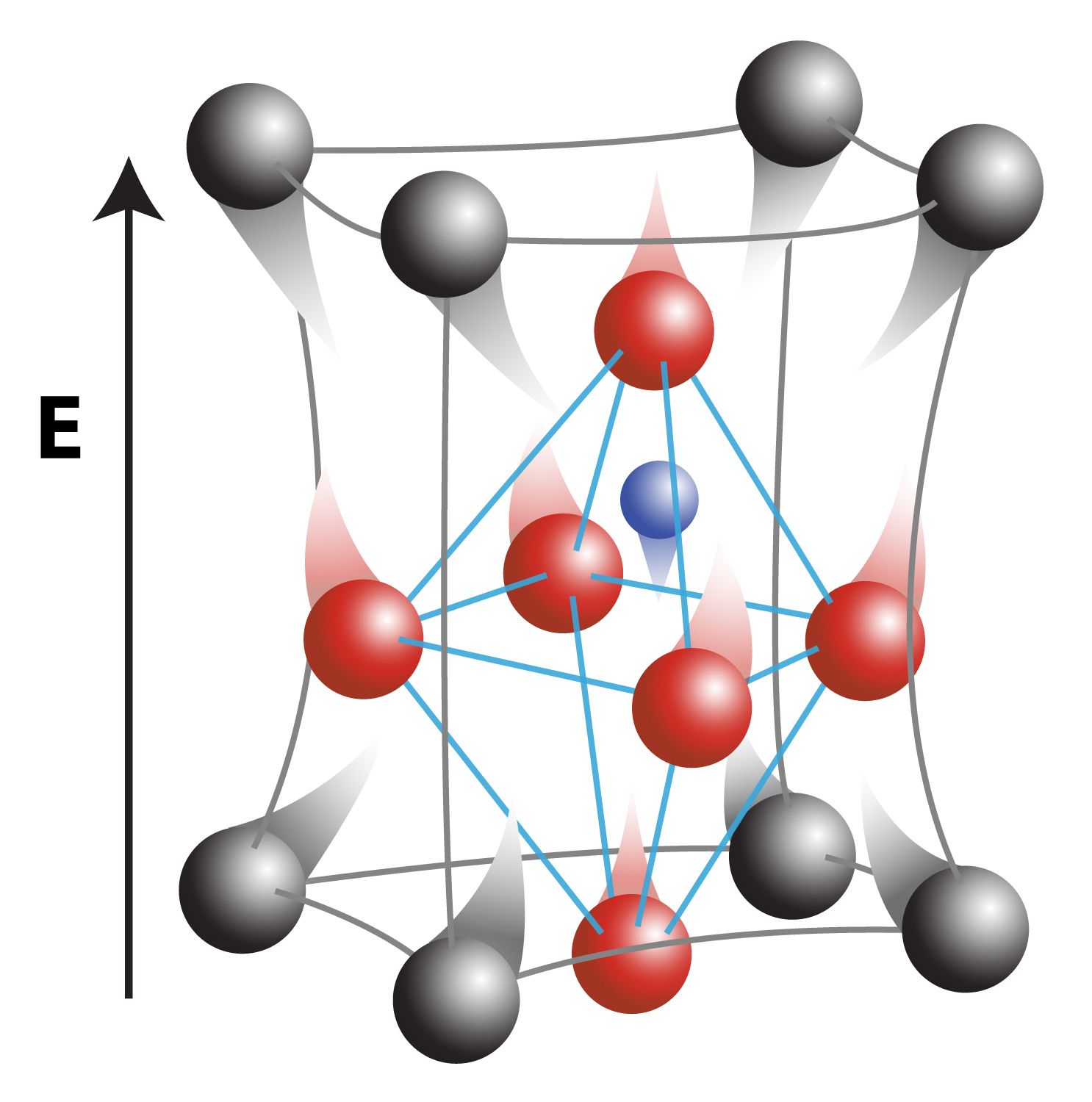
-
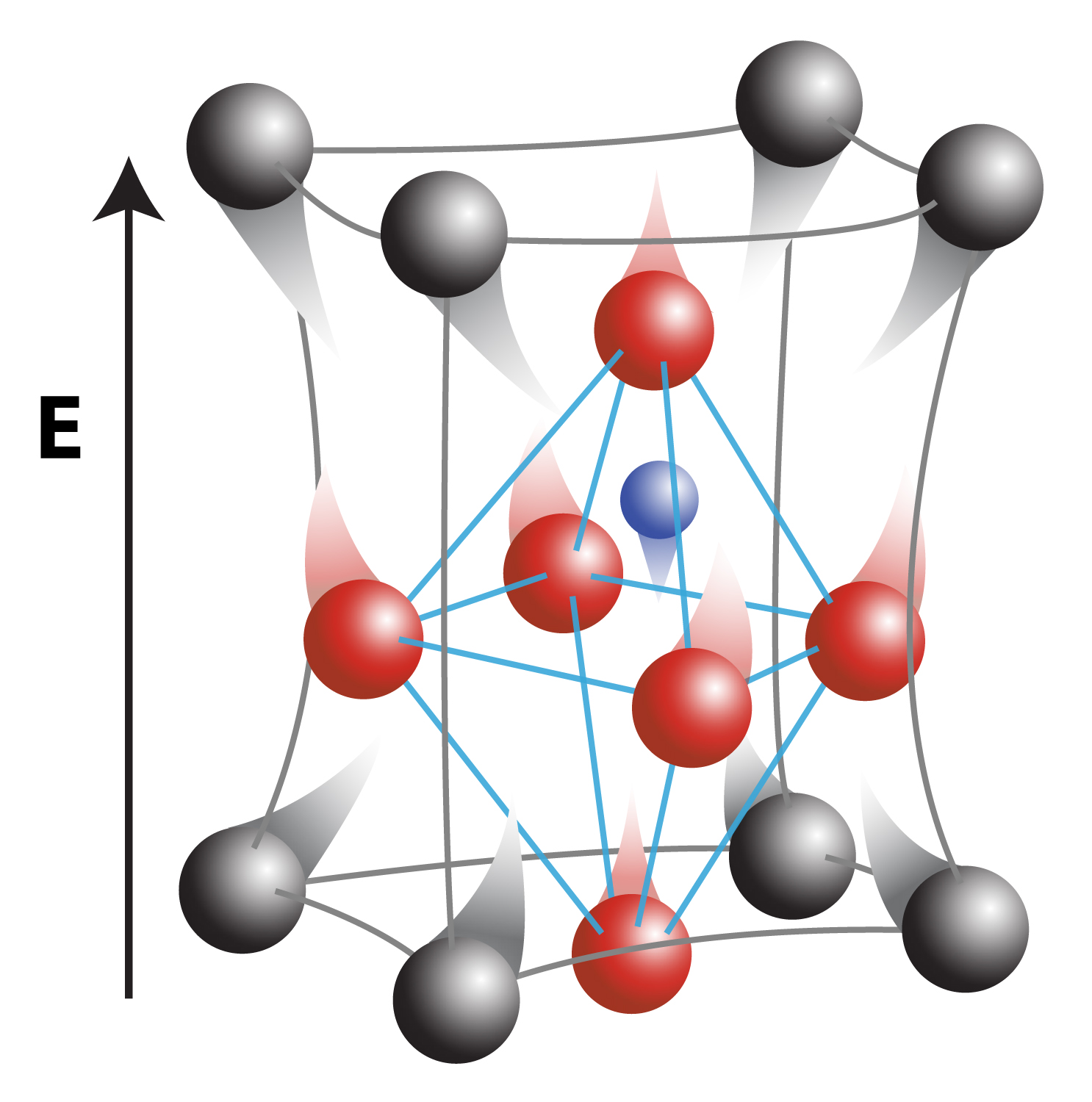
-

The alternating current (ac) electrical properties (dielectric constant, loss tangent and ac conductivity) of pure and cerium (Ce) doped barium titanate (BaTiO3) with a general formula Ba1-xCexTiO3 where x=0.00, 0.01, 0.02, 0.03 and 0.04 were studied at the temperature range -25 to 30°C. The samples were prepared by the conventional solid state reaction method and sintered at 1200 °C for 4 hours. The structural properties of BaTiO3 and Ce doped BaTiO3 were also studied. The scanning electron microscope micrographs for different doping concentration of Ce showed increase in grain size with doping concentration. Lattice constant and particle size of the samples were observed to decrease slightly with Ce doping as obtained from the X-ray diffraction measurements. The dielectric constant of the sample increases with temperature and undergoes a transition from orthorhombic to tetragonal at about 270 K. The value of dielectric constant sharply decreases with frequency up to 1 kHz and beyond that remains almost stable for all the samples at different temperatures. Dielectric loss at different temperatures showed a good agreement with frequency. The ac conductivity, sac of the samples increases with the increase in frequency reaches to a maximum value and then shows a decreasing trend. The frequencies of peak sac are observed to be shifted towards lower frequency with the increase in doping content.
Rahman et al, Alternating Current Electrical Properties of Cerium Doped Barium Titanate Below the Room Temperature, Banglaesh J. Phys., 25, 55-64, 2019-1
-

-
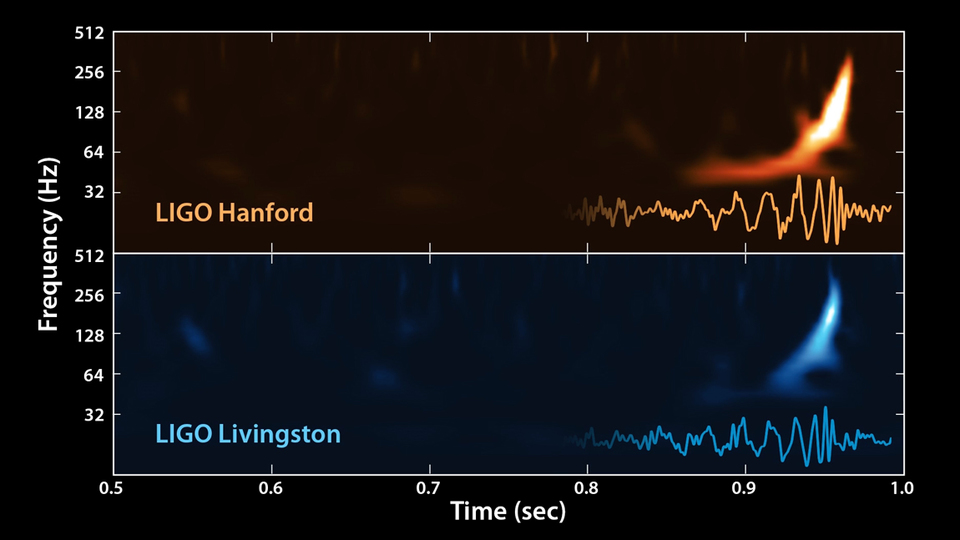
-

Download the file for Course Outline of Modern Physics for BME, CE, MME and IPE Depts.
Course Outline of Modern Physics for BME, CE, MME and IPE Depts.-1
-

-
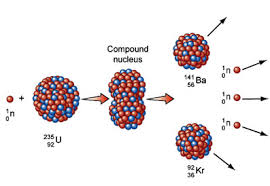
-
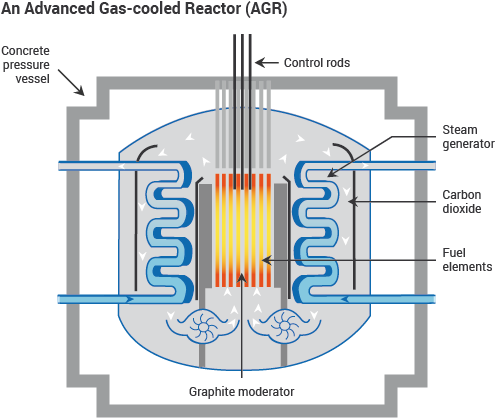
Nuclear Reactor - Understanding how it works
https://www.facebook.com/1144437889012622/posts/1902583213198082/
Nuclear Reactor - How it works-1
-

Problem Sheet on Quantum theory and Nuclear Physics for Practice
Problem Sheet on Quantum Theory and Nuclear Physics-1
-

-
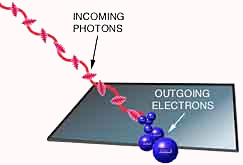
-
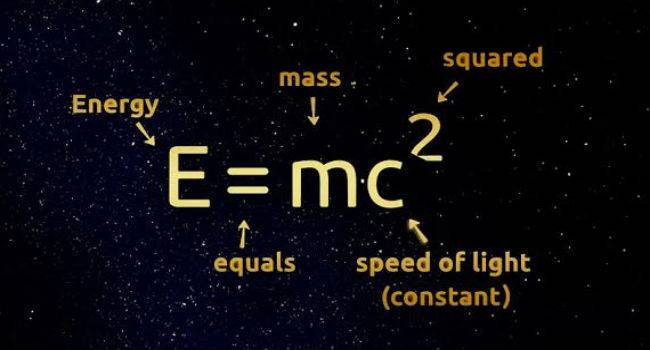
Research Summary
He is working on the production, functionalization and applications of carbon nanotubes. His present research interests are on Plasma Science and Carbon Nanomaterials.
Interests
- Carbon Nanomaterials
- Polymer Nanocomposites
- Plasma Processing
- Ceramic Materials
Laboratory Personel
Rani Nasrin
Structural, Optical and Electrical Properties of Thin Films of N-Benzylaniline Synthesized by Plasma Polymerization Method
+ FollowRani Nasrin
Structural, Optical and Electrical Properties of Thin Films of N-Benzylaniline Synthesized by Plasma Polymerization Method, Rani Nasrin, Student no: 1014144005P, Department of Physics, Bangladesh University of Engineering and Technology, Dhaka, Bangladesh, Ongoing.
+ FollowResearch Projects
Contact
Dr. Mohammad Jellur Rahman
Professor
Department of Physics
Bangladesh University of Engineering and Technology
Dhaka-1000, Bangladesh
Web: http://mjrahman.buet.ac.bd
and
Assistant Editor
Bangladesh Journal of Physics (BJP)
Email: mjrahman@phy.buet.ac.bd, mjrahman.phy@gmail.com
Phone: (880 2) 55167100, 55167228-57 (PABX) (7188)
Mobile: +88-01552346458



